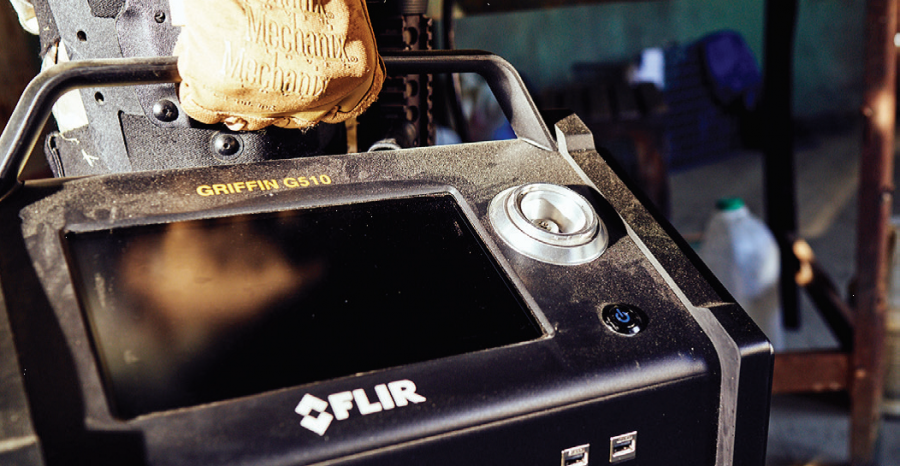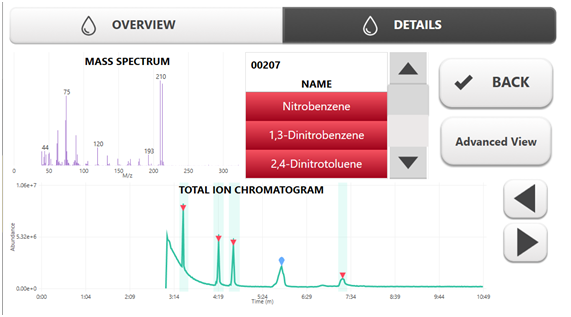The identification of an explosive on-scene? Easy with the Griffin G510
7th January 2020

The FLIR Griffin G510 can be used for explosive detection using GC-MS technology.
The Griffin G510 uses GC-MS (Gas Chromatography-Mass Spectrometry), which is gold-standard technology for chemical identification, used both inside and outside of labs. It is used to analyze complex samples, including those in the vapor, liquid, and solid phases.
G510 gas chromatograph-mass spectrometer
As the global threat of terrorism increases, special teams depend more than ever on both preventative and confirmatory technologies to complete their missions. Post-incident forensics and preventative intelligence are two scenarios in which a gas chromatograph-mass spectrometer (GC-MS) can supplement presumptive detectors to better inform action plans on-scene.
While handheld ETD equipment can help responders quickly assess potential on-scene threats and provide a presumptive detection, GC-MS technology like FLIR’s Griffin™ G510 adds more fidelity to the scene by specifically confirming the identity of an explosive threat.
Some explosives are hard to identify using presumptive detection as those in the same class can have very similar responses to the detectors. As GC-MS uses two analytical techniques to identify substances – GC to separate mixtures and identify a chemical’s unique retention time, MS to analyze the molecular mass and specific fragmentation pattern of the chemical – the identification of a substance is straight forward. Even if two substances have the same molecular mass, use of both GC and MS allows distinction between the chemicals and hence, successful identification.
The G510 from FLIR
The G510 is tailored for use by the military and first responders. It features a large touchscreen, with automated user controls that can be operated while wearing full PPE (Personal Protective Equipment). It also contains long-lasting batteries and is built with an IP65-rated, spray-resistant enclosure for use in harsh environments and post-use decontamination. For explosives identification, the G510 has specific methods for testing suspected explosive samples. Using these methods, a variety of explosives have been successfully detected and identified by the G510, including TNT, EGDN, TATP and RDX.
On scene, the investigator can collect a sample from the debris and perform either a liquid extraction or solid-phase microextraction (SPME), before introducing it to the injector on the GC-MS. In addition to a standard injector, the FLIR Griffin G510 is equipped with an air-sampling probe for vapor analysis, providing extra utility. Using the air-sampling probe or injector port, detection of substances down to the ppb (parts per billion) level is possible.
The capability set of the Griffin G510 means it can enable field users to confirm the identity of a broad range of explosives threats at the site of interest, which then better informs action plans.
Explosive Identification
Complex mixtures of nitrobenzenes and nitrotoluenes can be separated and identified simply using the G510. On the results screen, the “Overview” tab shows a list of the substances found in the sample, the “Details” tab allows more in depth viewing, also showing the total ion chromatograph (with peaks representing substances within the sample) and the mass spectrum with the list of substances. Without having to use complex analytical software, multiple components of a complex mixture can be identified effortlessly.


RDX is typically difficult to detect and identify with presumptive techniques, but the G510 can do so simply. In a challenging liquid mixture of TNT, mixed nitrobenzenes/nitrotoluenes and RDX, the G510 has been proven to successfully detect and identify a low concentration of elusive RDX.

TATP can be an issue for ETD equipment, but not for the G510. Most types of explosive detector will base the detection of RDX on the presence of hydrogen peroxide, a breakdown product of TATP. The G510 though has been proven to directly detect TATP in both liquid and vapor samples.

